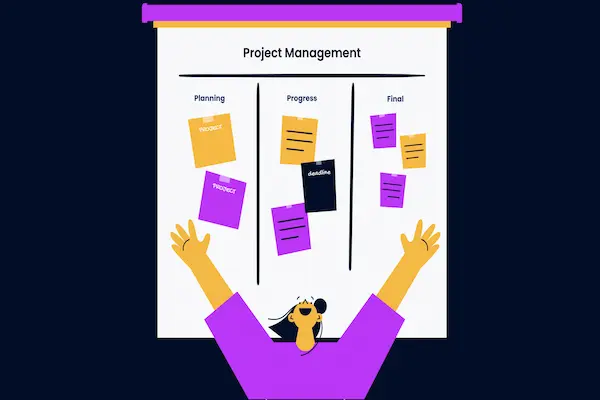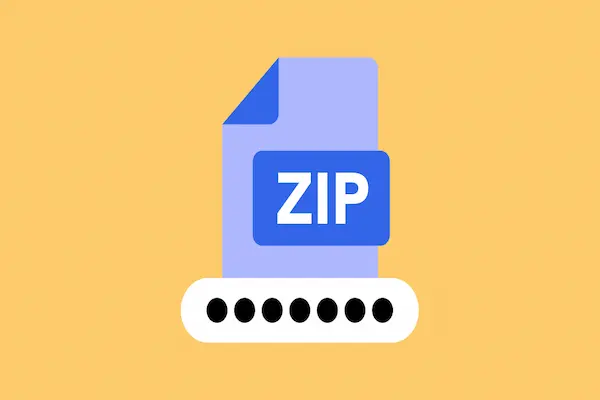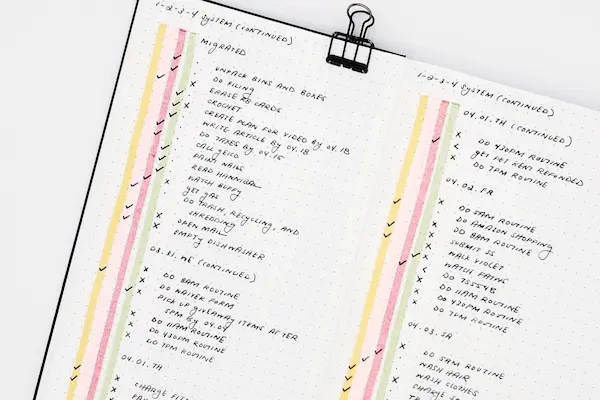Managing small projects might seem simple, but it still requires clear planning and good leadership to succeed. You need to focus on defining the project’s goal, creating a manageable plan, and guiding your team with influence rather than authority. The key to managing small projects well is to use scalable tools and processes that fit the project’s size and complexity.
Small projects usually have limited resources, fewer team members, and shorter timelines. This means you should keep your approach flexible and avoid unnecessary processes. Staying organized with a clear project plan, work breakdown, and simple scheduling helps keep your project on track without extra hassle.
Leading a small project means motivating your team to work toward shared goals, even when you don’t have formal control. You’ll also need to anticipate risks and solve problems calmly. Managing small projects well means balancing both managing tasks and leading people effectively.
Defining Small Projects and Their Challenges
Small projects usually have clear, limited goals, but they come with unique difficulties that can affect your success. Understanding their traits and common issues helps you plan better and avoid pitfalls. Knowing when a task should be treated as an official project is also key to using your resources wisely.
Characteristics of Small Projects
Small projects often have a narrow scope and involve fewer people. Your budget tends to be lower, and the timeline is usually shorter compared to large projects. These projects may focus on specific deliverables or improvements rather than broad changes.
You often have a small team, sometimes just a few people, which means each member may have multiple roles. Your project sponsor might spend less time actively managing the project, but their support remains important. Despite the smaller size, risks such as scope creep or staff changes can still have major effects.
A small project’s output may be critical to larger initiatives later on. This means even small projects require a clear plan, defined objectives, and regular communication with stakeholders to keep everyone aligned.
Common Obstacles in Small Project Management
Managing small projects can feel simple but challenges often emerge quickly. One frequent problem is scope creep, where extra tasks or goals slip in without formal approval. This can strain your limited budget and time.
You might also face difficulties scaling down project management methods. If you completely remove controls like risk logs or progress reviews, your project can easily go off track. Small teams are vulnerable, especially if key members leave or face stress. This makes it crucial to build flexibility into your schedule and encourage multi-skilling within your team.
Additionally, access to specialized skills can be tough. You may need to arrange temporary consultants, but you must get permission and budget approval early to avoid delays. Communication with stakeholders can be overlooked, but it remains vital to ensure your project outcomes are accepted.
When to Treat a Task as a Project
Not every task requires full project management, but when objectives are clear and multi-step, treating it as a project helps ensure success. Use this checklist to decide:
- Does the task have defined project objectives and deliverables?
- Is there a need for coordination between multiple people or teams?
- Are there risks that could affect your business if ignored?
- Does the task require management of resources, budget, or schedule?
- Is formal approval from a project sponsor or stakeholders needed?
If you answer yes to most, treat it as a project. Setting clear scope and regularly monitoring progress prevents confusion and wasted effort. Conversely, simple or routine tasks may only need basic tracking to save time and resources.
Project Initiation and Setting Objectives
Starting a small project well means clearly defining who is involved, what the project will achieve, and the boundaries it will follow. You need these elements to guide your work and communicate effectively with your team and stakeholders.
Identifying Stakeholders and Project Sponsor
You must first identify all key stakeholders, including the project sponsor, who provides support and resources. Stakeholders may include team members, clients, and other people affected by the project. Engaging them early helps gather important input and aligns expectations.
The project sponsor is critical because they approve funding and major decisions. You should maintain clear communication with the sponsor throughout the project. Knowing stakeholders’ interests and concerns helps you manage risks and prevents misunderstandings.
Create a simple list of stakeholders, outlining their roles and influences. This clarity will improve coordination and support during the project initiation phase.
Establishing Project Scope and Objectives
Defining the project scope means setting clear boundaries for what the project will and will not include. This prevents scope creep and keeps your efforts focused. The scope should be narrow, achievable, and easy to understand.
Project objectives specify what you want to accomplish. These should be specific, measurable, and aligned with your organization’s goals. For small projects, focus on a single objective that guides all tasks and decisions.
You can use a table to clarify scope and objectives:
| Aspect | Description |
|---|---|
| Scope | Defines limits, deliverables, and what’s excluded |
| Objectives | Specific goals to achieve |
| Success Measures | How you will know the project is successful |
Developing the Project Charter
The project charter is your formal document that authorizes the project and outlines essential details. It includes the project purpose, scope, objectives, budget, major deliverables, and roles.
For small projects, you can use an abbreviated or “lite” charter that focuses on key elements like objectives, stakeholders, assumptions, and risks. This keeps it simple but effective.
The charter gives you authority to use resources and acts as a reference to keep the project on track. Make sure it is clear and approved by the project sponsor before you proceed.
Effective Project Planning for Small Projects
When planning a small project, you need to break down the work clearly, understand your available resources, and pick the right approach to manage the tasks. These steps will help keep your project on track and within budget.
Work Breakdown Structures and Task Management
Start by creating a Work Breakdown Structure (WBS). This means dividing your project into smaller, manageable pieces called deliverables. Arrange these pieces from broad to detailed levels to give a clear picture of all the work involved.
Each deliverable should have specific tasks assigned, showing who is responsible for what. Keep your WBS simple but complete enough to cover all essential parts of the project.
Use a task list to track progress. This can be a basic checklist or include start and end dates. The task list helps you monitor what’s done and what is upcoming.
Identifying Available Resources and Budgeting
Know exactly what people, tools, and money you have before you start. List the skills available on your team and the time they can dedicate. Keep in mind that in small projects, team members often work part time on multiple tasks.
Set a clear budget, often under $75,000 for small projects. Your budget should cover all costs related to resources, materials, and any external help needed.
Track your spending closely and adjust the plan if resources shift. Keeping your resources and budget aligned will avoid surprises and delays.
Selecting a Project Management Methodology
Choose a method that fits the size and scope of your project. Most large-scale project management tools are too complex for small projects.
Look for scalable and adaptable methodologies. These use simple steps to start, plan, do, and check progress without unnecessary paperwork.
Focus on tools that help with scheduling, risk management, and communication but don’t overcomplicate. The method should help you focus on the project’s main goal efficiently.
Choosing the Right Project Management Methodology
Selecting a project management method depends on your project’s clarity, team size, and how much change you expect. The right approach can help you stay organized, manage resources well, and meet deadlines without extra stress.
Agile Approaches for Small Teams
Agile methods like Scrum, Kanban, and Scrumban work well when your project needs flexibility. These methods break work into small tasks called sprints or cycles. You get frequent feedback, so you can make quick changes as you go.
Scrum uses roles like Scrum Master and Product Owner to keep the team focused. Daily stand-up meetings help everyone stay on track. Kanban uses a visual board to show work stages and limits tasks to avoid overload.
You can combine these methods with project management software to visualize progress and track tasks easily. Agile suits projects with changing needs or if you rely on teamwork and quick decisions.
Using Waterfall for Simple Projects
Waterfall is a step-by-step project method. You finish each phase before moving on: requirements, design, implementation, testing, and maintenance. This clear order works best for small projects with fixed goals and rules.
If your project has few changes, like simple events or clear-cut tasks, Waterfall helps you plan well and avoid surprises. It demands good upfront planning and documentation. Tools that support linear scheduling can be helpful here.
Avoid Waterfall if you expect frequent changes. Also, keep in mind it may not suit projects that need quick adjustments or continuous feedback.
Hybrid and Lean Methodologies
Hybrid methods mix Agile and Waterfall to balance structure and flexibility. For example, you might plan big phases like Waterfall but use Agile cycles inside those phases to adapt quickly.
Lean focuses on cutting waste and improving efficiency. You look at what customers really need and remove anything extra. Lean is good if you want to deliver value fast without unnecessary steps.
Methods like Six Sigma and Lean Six Sigma help improve quality by reducing errors and optimizing processes. They often require data tracking, which can be done with project management software.
Choosing hybrid or Lean methods works well if your project has shifting priorities but still needs clear goals and quality control.
Building and Leading the Project Team
To manage your small project effectively, you need clear roles, reliable tools, and strong engagement from everyone involved. Each part helps your team work smoothly, meet deadlines, and keep track of progress.
Defining Team Roles and Responsibilities
You must clearly define who does what in your project team. Assign specific tasks to each team member based on their skills and experience. This reduces confusion and helps everyone know their duties.
Write down responsibilities so your team understands expectations. For example, one person might handle communication, another manages resources, and someone else tracks deadlines.
As the project manager, ensure roles are balanced and avoid overlap. You should revisit these roles if the project changes. Clear responsibilities keep your team focused and organized throughout the project.
Collaboration Tools and Workflows
Using the right collaboration tools helps your team stay connected, no matter where they are. Tools like shared calendars, task boards, or project management software give a clear view of progress.
Set up workflows that match your project size and complexity. For instance, simple checklists work for small projects, while more detailed scheduling helps with bigger tasks.
Encourage your team to update their progress regularly. This allows you to spot delays early and adjust plans. Streamlining communication and workflows reduces mistakes and saves time.
Ensuring Stakeholder Engagement
Keep your stakeholders involved by updating them regularly on project status and changes. This builds trust and helps you address concerns early.
Use brief reports or meetings to share key progress points. Ask for feedback so stakeholders feel heard and informed.
Include stakeholders in decision-making when possible. Their support can help you secure resources and remove obstacles. Maintaining strong stakeholder relationships is essential to your project’s success.
Managing Execution and Project Progress
During project execution, your focus should be on tracking progress, keeping everything aligned with your project plan, and handling changes carefully. You need a clear picture of how work is advancing and how to respond when things don’t go as planned. Making sure communication flows smoothly keeps everyone informed and engaged.
Monitoring Project Performance
You monitor project performance by comparing actual progress to your project schedule and planned tasks. Use tools like checklists or simple status reports to track completed deliverables and tasks. Pay close attention to deadlines, resource use, and any risks that could delay your project.
Track key indicators like task completion rates and overall progress toward objectives. This helps you spot problems early. If progress slows or milestones are missed, you can act quickly to get things back on track.
Document updates clearly, so you have a record of changes and can review performance over time. This also helps when reporting to stakeholders and making decisions.
Adapting to Change and Avoiding Scope Creep
Changes during execution are common but can threaten your project’s success if unmanaged. To avoid scope creep—when extra work sneaks in without approval—stick closely to your defined project scope.
Before accepting changes, evaluate their impact on your schedule, budget, and resources. Ask yourself if the change is necessary and if it aligns with the original project goals.
If you decide to adjust the scope, update your project plan and communicate clearly with everyone involved. This keeps expectations realistic and prevents hidden delays or cost overruns.
Communicating Project Updates
Regular communication keeps your team aligned on progress and aware of any challenges. Share updates in concise, clear formats, like weekly summaries or short meetings.
Make sure to cover key points: completed tasks, upcoming actions, risks, and any changes to the schedule or scope. Tailor your updates to your audience—team members need details on their tasks, while stakeholders want a big-picture status.
Encourage questions and feedback to promote transparency and collaboration. Good communication helps maintain trust and avoids misunderstandings that can slow your project down.
Tools and Techniques for Small Project Success
Managing a small project means choosing tools that save time and keep your team organized without adding extra work. Using visual aids and software designed for your needs helps you track progress, assign tasks, and focus on key deliverables. The right techniques make project steps clear and manageable.
Utilizing Gantt Charts and Mind Maps
Gantt charts help you plan and visualize your project schedule by showing tasks along a timeline. You can see start and end dates, dependencies, and deadlines easily. This helps you ensure the project stays on track and avoid delays.
Mind maps allow you to organize ideas and tasks visually. They are useful during project planning to break down goals into smaller parts. You can quickly add or change tasks, which is helpful when your project scope shifts.
Both tools give you a clear overview of your project’s structure and priorities. You can create simple Gantt charts or mind maps with free or low-cost software or use features in platforms like ClickUp to combine them for better clarity.
Implementing Kanban Boards and Project Templates
Kanban boards show your work in progress with columns like To Do, In Progress, and Done. This method helps you track what needs attention and limits multitasking. It’s especially useful if your team juggles multiple tasks or projects.
Project templates save time by providing pre-made outlines for recurring project types. With a template, you don’t start from scratch—you get tasks, deadlines, and workflows ready to customize. This consistency reduces errors and speeds up planning.
Using both tools can improve your workflow. Kanban boards keep daily tasks visible, while templates guide overall project structure. Many project management tools, including ClickUp, offer easy-to-use kanban systems and customizable templates.
Leveraging Project Management Software
Project management software brings your tools into one place for easier control. You can assign tasks, set deadlines, and communicate with your team in real time.
Look for software that fits small projects—lightweight, flexible, and easy to learn. Options like ClickUp provide Gantt charts, kanban boards, templates, and mind-mapping features all together. This helps reduce switching between programs.
Using software can also help you track progress and risks automatically. It keeps documents, schedules, and communications connected and accessible, which improves coordination and project results.
Closing Out and Evaluating Small Projects
Ending a small project requires clear steps to finalize your work and assess how well it met its goals. You will need to ensure deliverables are accepted, review project outcomes, and properly acknowledge your team’s efforts. Doing this creates a solid foundation for your next projects and strengthens your project management skills.
Project Delivery and Handover
You must confirm that all project deliverables meet the agreed standards and get formal acceptance from your client or stakeholders. This step, known as project closure, is essential to show that work is complete and approved.
Gather all final documents, including contracts, reports, and approvals. Ensure all project invoices are paid to clear financial obligations. Then, organize and archive these records for future reference or audits.
If your project leads to ongoing work or maintenance, assign someone to manage this transition. Proper handover prevents delays and keeps everyone informed about next steps and responsibilities.
Evaluating Project Success and Lessons Learned
Assess your project against its original goals to measure success. Look at whether you met deadlines, stayed within budget, and delivered the expected quality. Use this evaluation to identify where the project met or missed targets.
Gather feedback from your team and stakeholders to gain different perspectives on what worked well and what did not. Document these lessons learned in a clear report. This will help you avoid repeat mistakes and improve processes in future projects.
Include a financial review to understand if costs aligned with the budget. This helps justify the resources spent and provides insight into your project management effectiveness.
Recognizing Team Contributions
Acknowledging your team’s effort is a crucial part of closing a project. Recognition motivates individuals and builds a positive working environment for upcoming projects.
Host a brief meeting or informal celebration to thank everyone involved. Highlight specific achievements, such as meeting tight deadlines or solving tough problems.
You can also document individual and team performance during project evaluation. This recognition supports career development and encourages accountability.
By valuing contributions openly, you close the project on a positive note and set a cooperative tone for future work.






